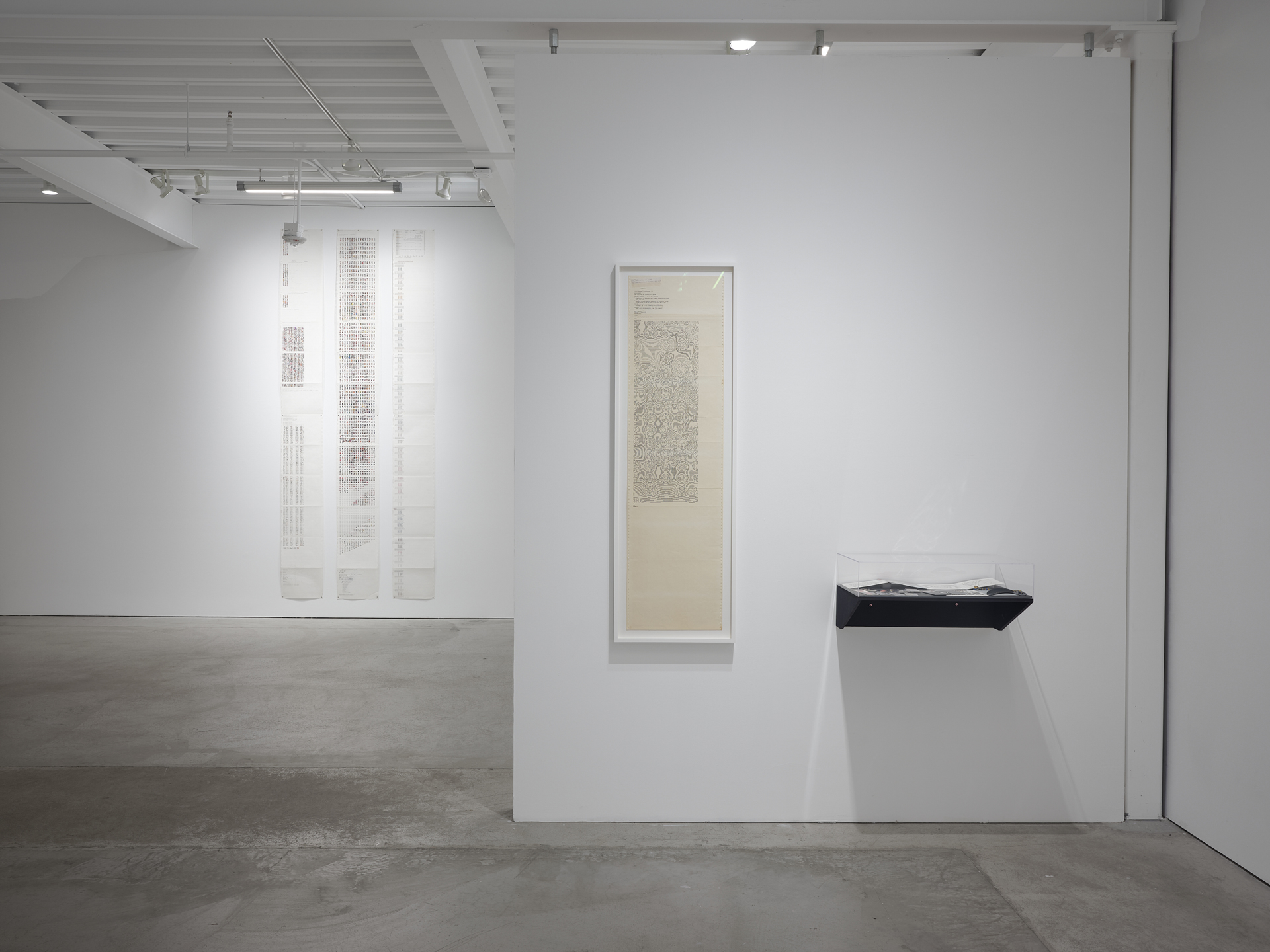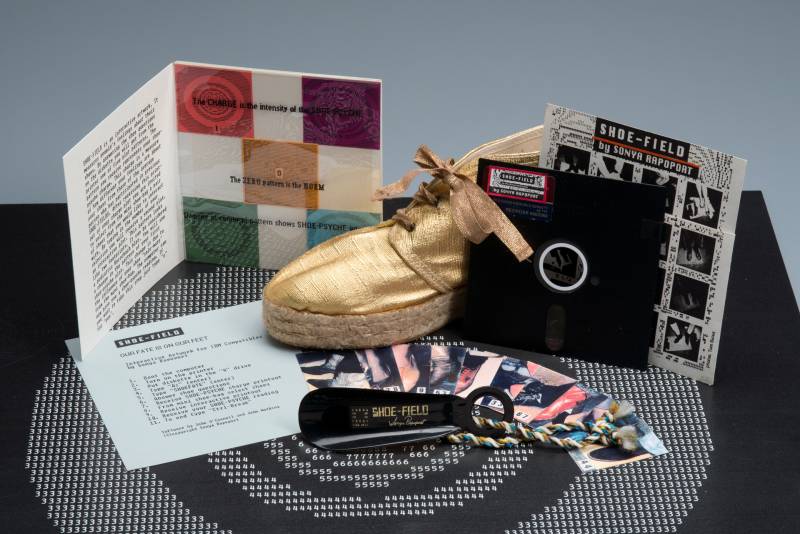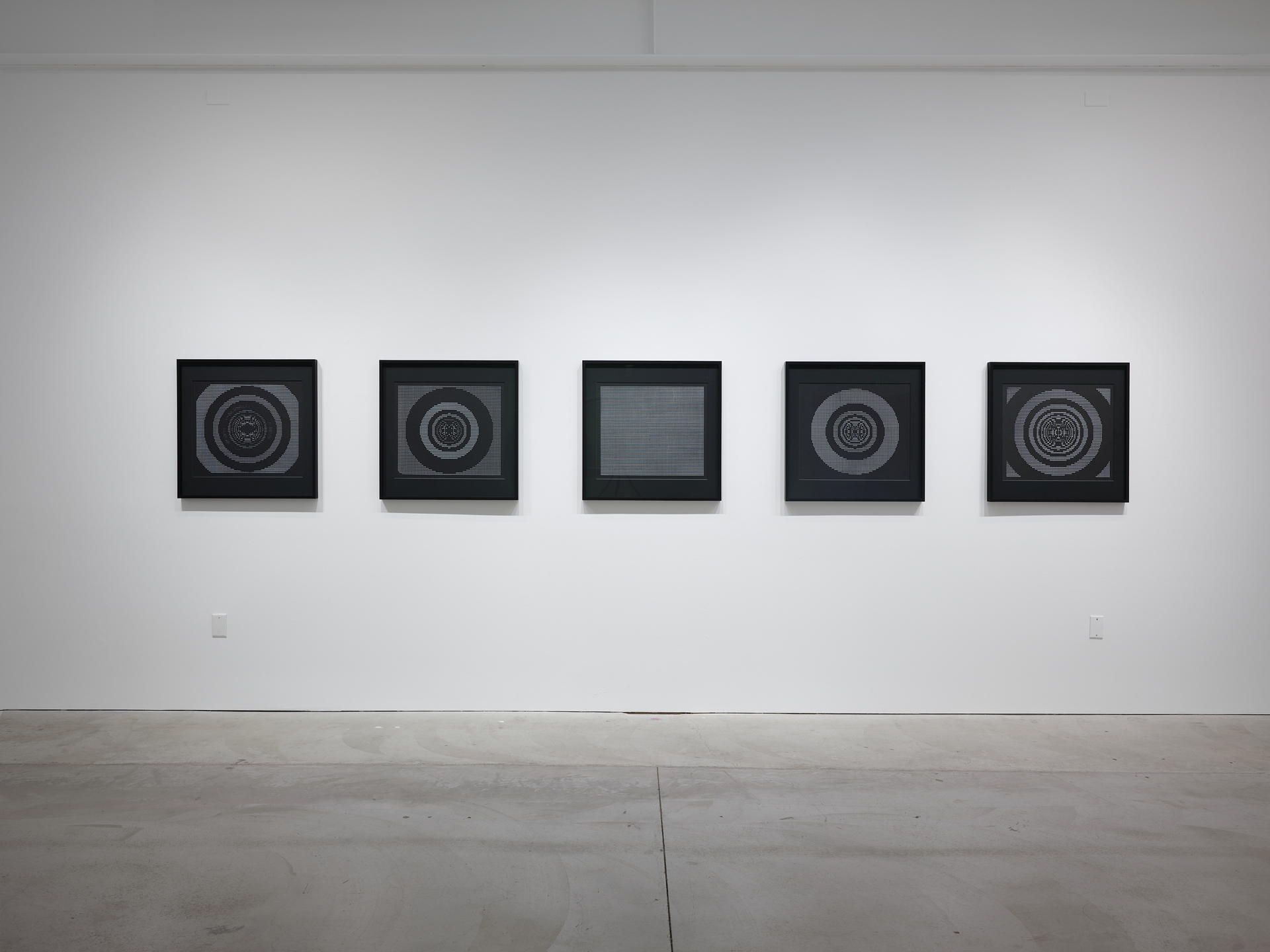I’ve been diligently avoiding engaging with AI-generated art. Most of what I’ve seen (melty humans with too-many-fingered hands in weird places) feels more like an exercise in dark humor than it does a groundbreaking new avenue in art production. And while fearmongering headlines feed worries about artists being replaced, I tend to lean in a more hopeful direction: technology is a tool. Artists will always find ways to undermine, critique and radically adapt those tools to their own advantage.
I have this belief because of artists like Sonya Rapoport. When she passed away in 2015, she left behind six decades of work across a variety of mediums, including painting, drawing, assemblage, interactive computer installations and web art. Force Fields, a show of her early computer art and works on paper, is now on view at San Francisco’s Casemore Gallery through May 13.
Born in 1923, Rapoport was one of the first women to receive a master’s in painting from UC Berkeley, coming up in the Abstract Expressionist scene. Last year, Casemore exhibited a series of her 1960s “fabric paintings,” a departure from that earlier work, where Rapoport used the existing patterns of commercial textiles as funky substrates — responding to and masking out sections in turn. Atop garish floral patterns, she painted her own language of hard-edged organic curves and solid shapes, building out and layering the paintings until they became sculptural wall works.

In 1976, her medium shifted yet again with the discovery of discarded dot-matrix printouts in the basement of a UC Berkeley math building. She treated the papers much like she had those found fabrics. Lacing the sheets together with colored thread, she responded to their existing patterns with colored pencil, stamps and her own language of shapes, which she called her “Nu Shu” language. (It was Rapoport’s nod to the centuries-old written language of Nüshu, developed by women from the Xiao River valley in China as a means of resisting a patriarchal society.)
To Rapoport, the computer printout was “a ritualistic symbol” of modern-day technology. In Hovenweep V, VI, and VII (1976), on view in Force Fields, she embellished research printouts created by archaeologist Dorothy Washburn, who was looking at the graphics of Native American pottery to identify migration patterns. Passing through Ropoport’s hands, the three vertical rolls of paper take on a monumental scale and become doubly encoded — first by Washburn’s methods, then with Rapoport’s vibrant color pencil markings.




